
24.01.2022
Through visionary fiction, the fronteristxs collective imagines a future that narrates a radical transformation of existence on planet Earth, which as an elementary part, includes the abolition of the prison industrial complex.
This text was written from Tiwa land
(Albuquerque, New Mexico)
The Uprising
By 2032, commercial space travel was an everyday reality for the richest 1%, thanks to the billionaires of Earth. This explosion of fossil fuel burning sped up the climate crisis, sharpening chaos and upheaval to every corner of Earth. In 2039, 20% of the population in the Americas were permanently displaced due to frequent flooding and rising sea levels. In 2041, a tsunami destroyed the city of Washington DC. Fires burned year-round in the areas surrounding major cities west of the Mississippi River in the former United States. 50% of all species that existed in 2021 were extinct by 2045. That year, the majority of the Earth’s landmass became uninhabitable for settler societies.
Nation-states collapsed. Every band of humans that survived to form a society was a nomadic one.
By this time, the billionaires had established the Colóns, space bubbles fueled by power generated from burning garbage on Earth. Engineers and IB[1] (intelligent beings) provided all of the labor required to maintain the Colóns. The Colóns were small, each one maintaining only 20 billionaires. The billionaires lived fragile and limited lives, eating laboratory meat and drinking water that was a byproduct of the fuel-making process. Each billionaire lived inside a specialized oxygen suit and very rarely experienced the touch of another. The billionaires began to worry about the effects this would have on their race, so they developed the OEUF[2] process, using genetically enhanced embryos to produce babies whose brains would release oxytocin and dopamine with reduced touch and emotional contact.
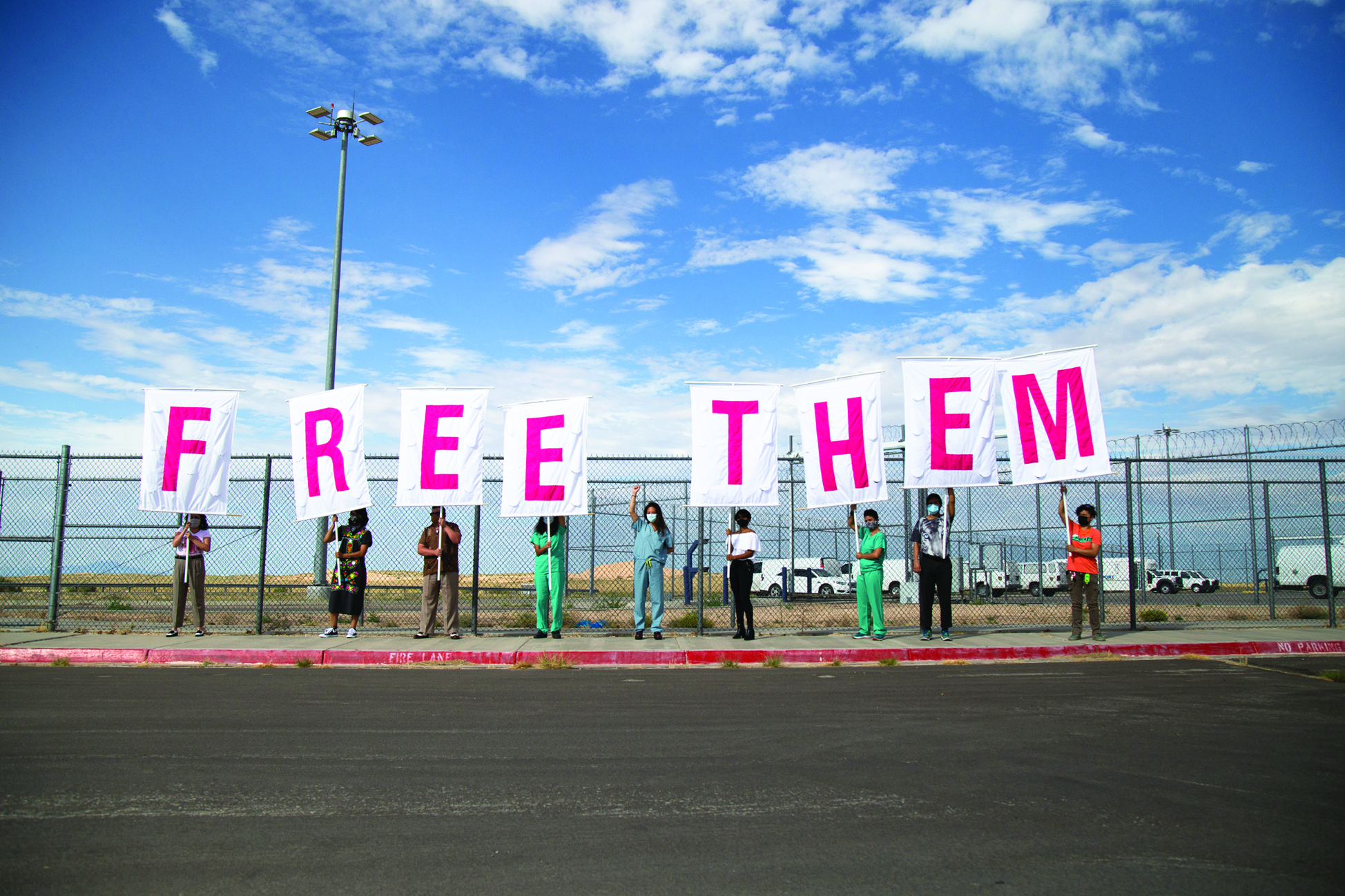
Back on Earth, institutions that characterized the nation-state were being dissolved or destroyed. Schools, churches, factories, and corporations disappeared. Prisons and policing were among the last institutions to fall: because of population collapse and the billionaire escape from Earth, the need to warehouse people who had been considered “surplus populations” and “criminals” inside prisons was becoming obsolete. Chaos ruled outside, and during climate events like floods, extreme heat/cold, and fires, prisons were often the most vulnerable places–abandoned and forgotten.
For decades, the prisoners themselves had been organizing, studying, and mobilizing.
Their hitherto localized efforts would grow to become a mighty movement; the tide really started to turn as they convinced more and more guards to abandon their posts and join their cause. With each climate event, an entire prison would emancipate itself. Eventually, bands of the former prisoners and guards found each other, and they became instrumental in toppling the last remaining institution on Earth: the U.S. military.
What happened was this: the U.S. military had been deployed by the billionaires to guard Earth’s garbage, a valuable resource due to the need for fuel for the Colóns. By this time, the U.S. did not exist as a government, but its military and police had joined forces and continued to function as its own self-sustaining entity. Every day, Earth refugees who were trying to salvage food, clothing, and shelter from the garbage heaps were killed, shot with the few remaining bullets on Earth. This would eventually lead to revolt and revolution. The nomadic societies and the former prisoners all recognized their need for one another, their daily survival depended on being able to gather necessities together. In 2047, they formed an uprising; their sheer numbers overwhelmed the military, and they took control of the garbage–the last resource that could be extracted by the billionaires and their Colóns.
The following is an account written by one of the formerly incarcerated freedom-fighters:[3]
Los eventos tomaron un curso distinto, empezamos a vivir la era de caos y confusión, muchxs no lograron adecuarse. Yo fui partícipe.
El cometido de la nueva revolución dio sus frutos al abolir los sistemas hegemónicos, no solo el poder se mantuvo firme por muchos siglos de represión si no también exterminó a múltiples comunidades a lo largo de los siete continentes. Le prendimos fuego a los conceptos de las fronteras, clases sociales, el patriarcado, religión y el capitalismo; con las ruinas se construyeron cimientos basados en distribuciones equitativas donde poco importaban el color, el género o la sexualidad; una ideología de permanencia interseccional y plural profundamente ética.[4]
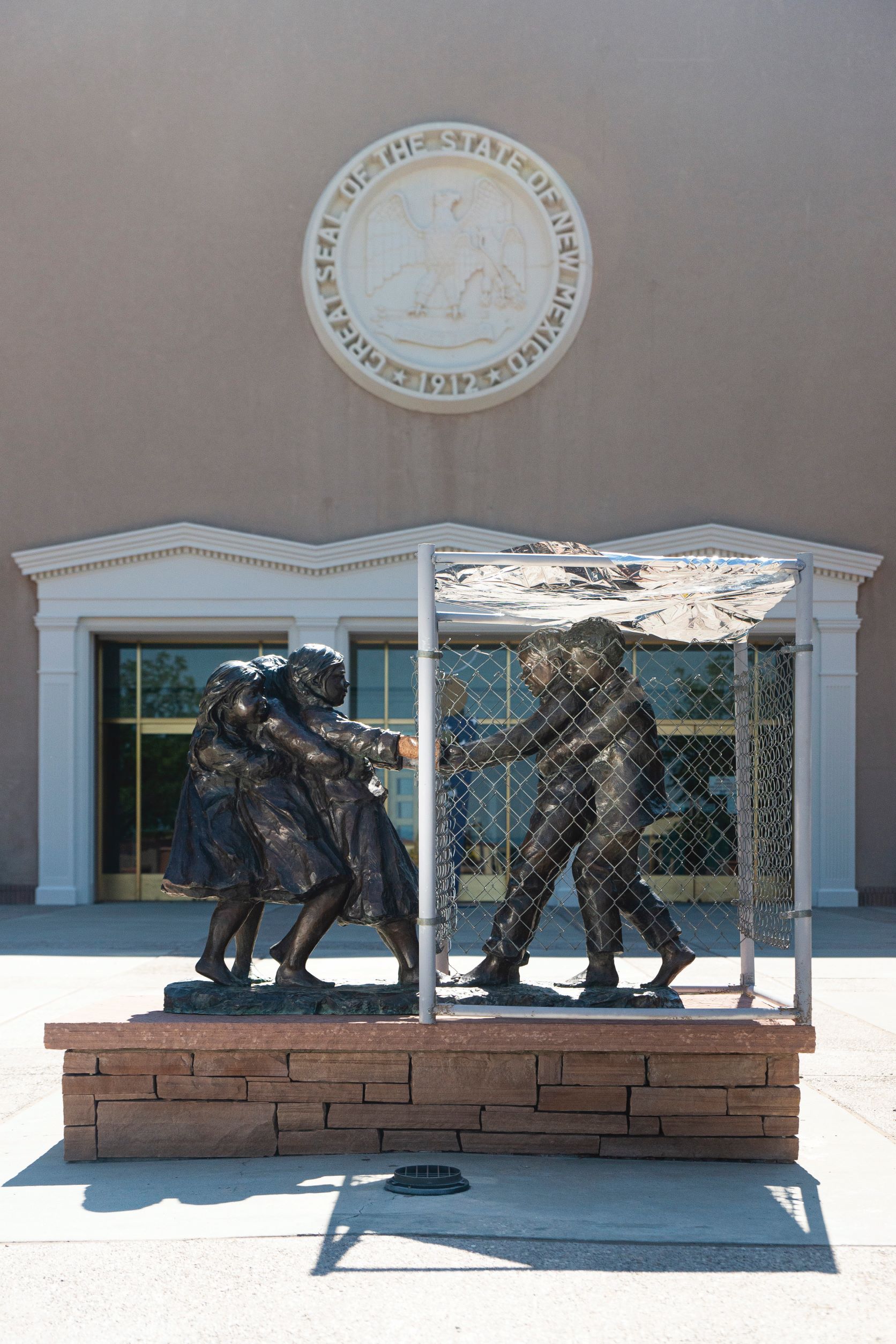
Ahora que el mundo culmina su reconfiguración, los trece colectivos nómadas que se distribuyen a lo largo del globo responden específicamente a sentidos vitalistas para la conservación de los pocos recursos naturales que quedaron después de la era de caos. Cada uno con una función dentro de sus trece ubicaciones: ingesta, conservación, creación, investigación, ecología, conocimiento, espíritu, cuerpo, recreación, dinámica, cosmovisión, movimiento y sabiduría son las funciones esenciales; lxs habitantes de cada colectivo rotaban al cabo de 166 días con el fin del intercambio de conocimientos.
El liderazgo se otorgaba a trece sabixs que apoyaban esparciendo el conocimiento que ya no estaba centralizado. Fue de suma importancia su conocimiento pues portó la batuta para comunicar y avalar por este mundo otrx y sus habitantes. El sentido capitalista pasó a ser un mero cuento arcaico y mediocre, disminuyendo así la adicción por riquezas, para dar cabida a un periodo de aprendizaje, migración y adaptación con el fin de lograr una transición efectiva.
El tiempo es sabio y permitió una distribución equitativa de los conocimientos colectivos que habíamos adquirido después de la era de la reconfiguración, creando un acceso al conocimiento de la forma más segura que permitió cosechar una sociedad justa y llena de intercambios que ahora son la base de una nueva existencia y forma de vivir. Y aunque bien lo sabemos no todo es perfecto, después de desmantelar ese tóxico concepto de creer resolver problemas al encarcelar gente, implementamos un sistema de justicia equitativa conocida como A.C.T (Acto Colectivo de Transformación) en donde buscamos un diálogo para solucionar conflictos. Creemos firmemente que el conflicto se resuelve de una forma comunitaria, buscando diálogo y resolución que logre reparar, transformar y ayudar a las partes involucradas.
No todxs lxs habitantes del globo quisieron ser parte de nuestras configuraciones, pero siempre se confió en que la solidaridad motivaría intenciones para formar estilos de vida, que ante todo, rechazarán reproducir las formas que nos llevaron al colapso en primer lugar.
Ahora que lo pienso, me siento afortunado al entender que no todxs compartimos las mismas formas de vivir. Ello no significa que nuestro andar se riga por la polarización o por la pretensión de conocer la verdad más allá de la propia existencia. En nuestros hogares se practica la escucha y se aprecia el silencio para resistir al egoísmo.
No criticamos o discriminamos a aquellxs que viven fuera de nuestros sistemas.
Es más, hemos aprendido a respetar las decisiones de personas que no comparten nuestros ideales y vivimos en permanente armonía con ellxs ya que reconocemos y valoramos la potencia que yace en aquellos conflictos que se suscitan en la tensión entre, diferencias, entre afinidades y discrepancias. Esto ha sido la clave para este mundo otrx.
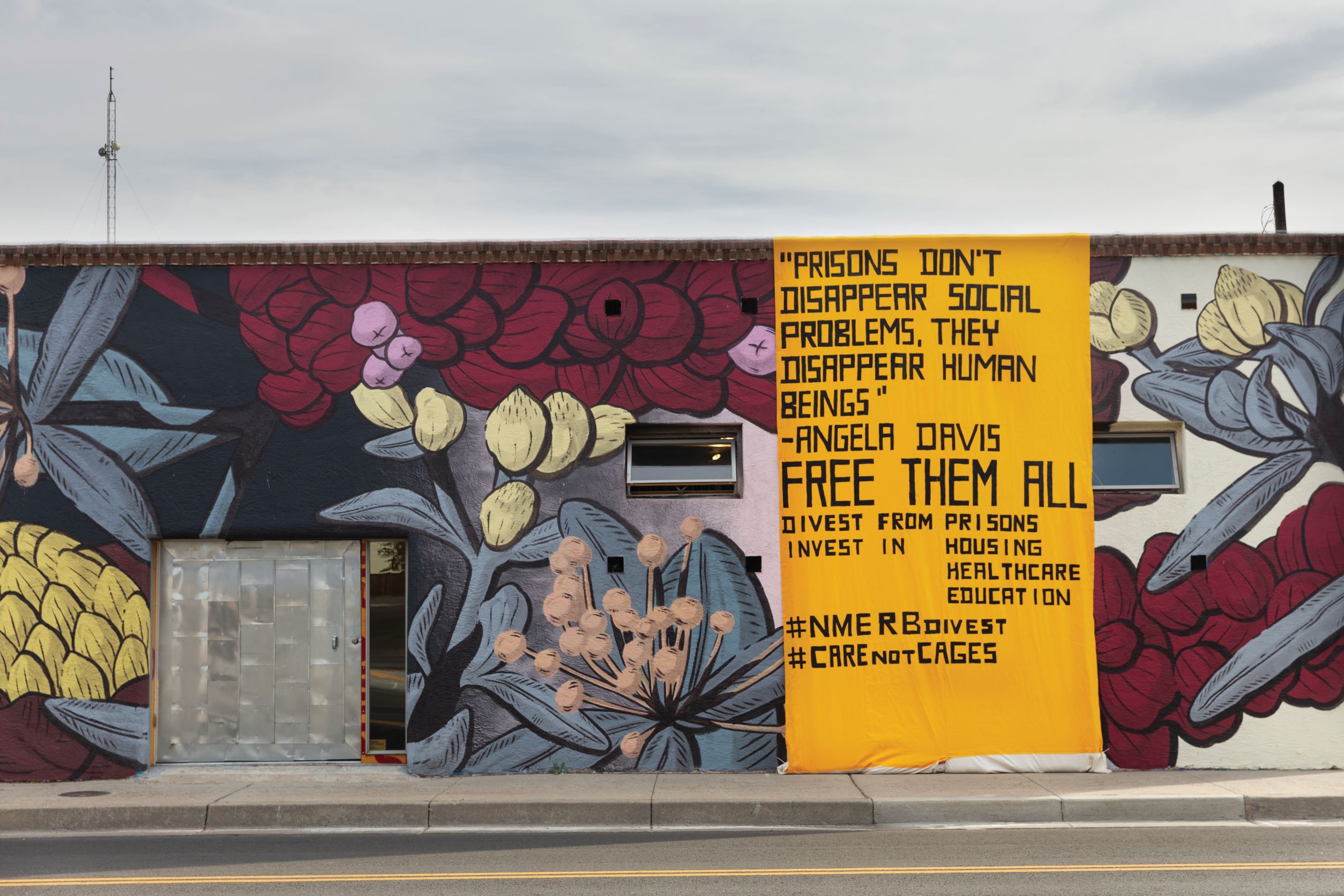
Manifesto
We are the fronteristxs. Our fight for liberation for all is grounded in the prison industrial complex (PIC) abolition movement, defined as a “political vision with the goal of eliminating imprisonment, policing, and surveillance and creating lasting alternatives to punishment and imprisonment.”[5] For us, the PIC and the militarized border are connected because we see them as part of a system of gate keeping, where “desirable” and “undesirable” mix, where there is a rupture of violence that attempts to control, surveil, and eliminate. We utilize artistic activism, through tactics such as direct actions, banner drops, creative disruptions, guerilla projections on buildings, billboards, political education, and community organizing to disrupt neoliberal democracy. In the United States, the institutions of police and prisons are rooted in enslavement and oppression of Black and Indigenous people.
Early police forces were “slave patrols,” formed to catch runaway enslaved people.[6]
In the Western U.S., police departments were formed to keep Indigenous people out of cities built by white settlers.[7] These and other historic practices are seen in the policing and prison system of today through the existence of private prison companies (the same ones which run immigrant detention centers), highly exploitative prison labor, and lucrative contracts within what is deemed the “prison industrial complex.” People of color are disproportionately impacted by mass incarceration and policing, a legacy of this history.[8]
The fronteristxs advocate for a world where abolition is possible, one where “we’re not just looking at those structures and figuring out ways to dismantle them, but also figuring out ways that our relationships with each other don’t model what the state’s logic is about who is disposable and who is expendable.”[9] A question that the fronteristxs asks daily in our activist work is: How do we live and respond ethically to the systemic brutality, knowing full well that many of us are embedded in it and benefit from the economic equalities it produces? The fronteristxs are concerned with what is the “not yet” on the horizon of the abolition movement, what is between the borders and fronteras of social life. We attempt to bridge art, language, performance, and affect through presence in the communities most affected by the carceral state. Just as our name signifies the in-between, border, or frontier, we take cues from José Esteban Muñoz by asking ourselves: “What does it feel like to be a problem?”[10] And through our art actions, we see an opening in being the “problem” where racialized bodies are not valued. All of us are children of migrants. And while most of us are educators, writers, and artists, we strive to make art that does not simply “[map] belonging through exhausted narratives of identity…” but through the documenting of the problem.[11] This means that we are attempting to create narratives and art that are not within or outside of identity politics or representation, but beside these things. Our art examines the problem of being a problem and creates an affective register where problem subjects feel and recognize that problem in others.
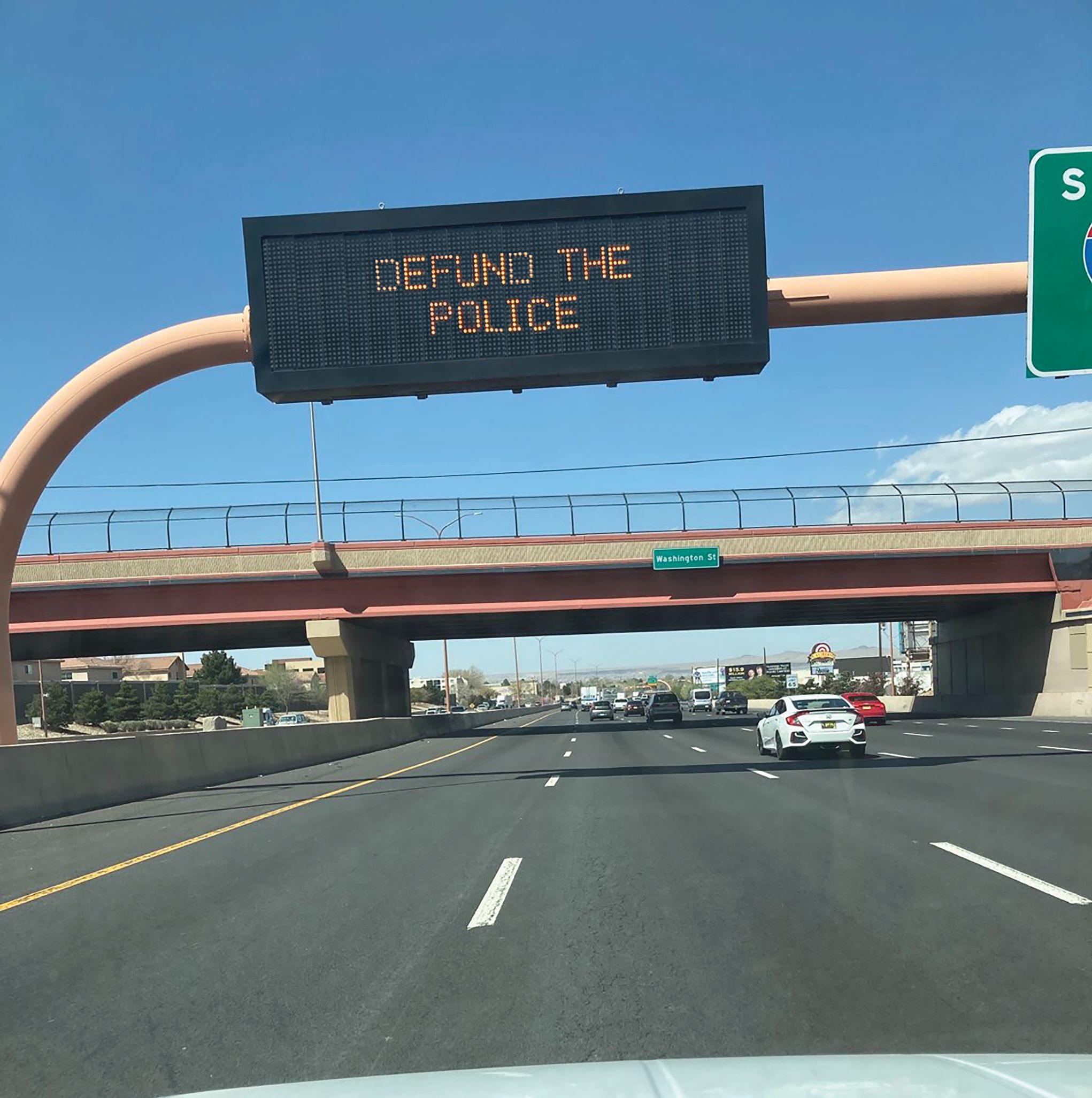
In July 2020, the fronteristxs launched its #FreeThemAll campaign, a series of art actions that ties into national calls to demand release of detained migrants and incarcerated people. We partner with many coalitions, and have staged actions with members to demand that the state “FREE THEM”—in front of the Metropolitan Detention Center in Bernalillo County, the Second Judicial District Court in Albuquerque, and the New Mexico State Capitol in Santa Fe. On August 1, an intervention on a public sculpture was installed at the New Mexico State Capitol building. The sculpture–depicting two groups of children playing tug-of-war–was momentarily disrupted with the installation of a cage around it, reframing it as one group of children pulling the other half out of the cage to FREE THEM.
On April 9, 2021, we posted a photo on all our social media platforms of the Interstate-40 freeway and the electronic variable message sign that sits on the bridge above. As of late, the electric sign usually has displayed a message regarding COVID-19 or updates of accidents. However, in our social media post, the electronic variable message sign read “Defund the Police.” The local social media sphere in Albuquerque started buzzing. Did fronteristxs really hack the I-40 electronic sign? How did they do it? How long will “Defund the Police” be up until a government official notices the hack? These were some of the questions flooding our direct messages and comments. Other comments were emoji fists raised in power. Our collaborators posted the photo with statistics on the Albuquerque Police Department and their perpetual violence on our communities. They didn’t ask questions; they just reposted the photograph. On April 9, 2021 we reached 5,164 people with that one post. We never revealed whether we actually hacked the electronic sign in the I-40 freeway going west in Albuquerque. And that information does not matter.
The post is a strategy that fronterstxs utilizes to provoke not only emotion, but presence.
While we are in a historical moment where people all over the U.S. are actively organizing against the police, here in New Mexico, the proposed police budget for 2021-2022 is $223.4 million dollars, up from last year’s $208.7 million. Our social media visual posts and political education fall in line with a history of political memes that go viral and create “presence” when government officials want nothing more than to silence us.[12]
Epilogue
In late 2019, the fronteristxs collective traveled to the US-Mexico border at El Paso/Ciudad Juárez to deliver goods to friends and relatives. One evening in Juárez, we were going for a drive and ended up at the Plaza de la Mexicanidad. We got out to stroll in the shadow of the giant X sculpture, “La Equis,” and as we got closer, someone noticed a graffiti tag on the underside that read: “X_HALLEGADO.” We later kept looking for other similar tags in the city, thinking it could be the name of a local graffiti artist. We didn’t find any others.
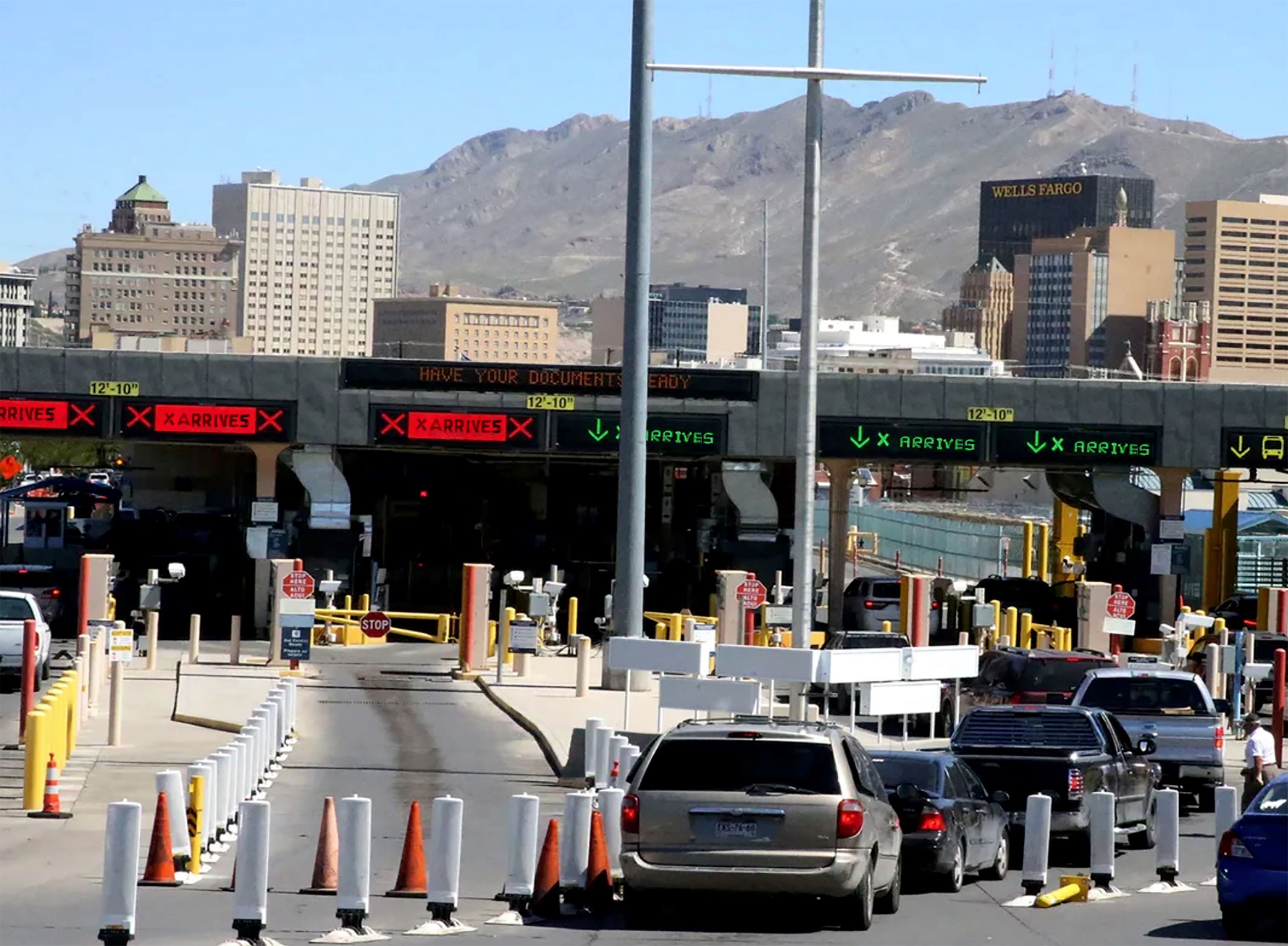
Returning north on the Paso del Norte bridge, one of our members noticed something strange: the electronic signs over the car lanes all contained the message, “X_ARRIVES” instead of the usual “Open/Abierto” and “Closed/Cerrado.” We were reminded of the graffiti we had seen earlier. Thinking the cryptic letters might have something to do with the flow of traffic, we tried to decipher it. We came up with many absurd theories: someone thought it could be a guerrilla marketing campaign. Another thought that it might be some kind of reference to “La Equis” back in Juárez. “Hey, maybe it’s about us––the X in fronteristxs,” joked another member. We figured it was just a glitch.
In writing this piece (the one you are reading now), we have been inspired by science fiction stories by PIC abolitionists who are writing and organizing for the world we want to live in. We have since decided that the messages we saw at the border that day were sent to us from another dimension. We understand them as missives from the liberated peoples who exist in the future described in this text, one in which prisons and police have become obsolete, a world in which we must find alignment and solidarity with one another if we are to survive.
X is the unknown variable, the world we want to live in, the world we are trying to build now.
X is genderfluid, X is antiracist, X is anti-capitalist, X is decolonial, X is a border-crosser. X has arrived and continues to haunt our past, present, and future.
A movement by the IBs led to dropping “artificial” from the term “artificial intelligence.”
Oxygen-enriched uterine fertilization.
Read the English version of this text in the Spanish version of the article just besides this.
Recuerdo haber memorizado un consejo que llegó a mi en sueños mientras dormía en la fila, en espera de que comenzara la repartición de alimento: “Recuerda las palabras de las Ludditas Sexxxuales: Una Ética se opone a la moral. Ética es la disciplina de lo bueno para mi cuerpo, es decir aquello que estimula e incrementa mis pasiones alegres y mis potencias, aquello que me compone con más cuerpos y en más afinidades y alegrías.”
Critical Resistance, “What is the PIC? What is Abolition?”, About section: http://criticalresistance.org/about/not-so-common-language/ (Accessed May 11, 2021).
“The origins of policing in America,” Washington Post (via YouTube), September 24, 2020, https://www.youtube.com/watch?v=eBvo2OE5kqM.
“Defund Police,” Project NIA (via YouTube), October 13, 2020, https://www.youtube.com/watch?v=bT0YpOmk8NA.
Leah Sakala, “Breaking Down Mass Incarceration in the 2010 Census: State-by-State Incarceration Rates by Race/Ethnicity,” Prison Policy Initiative, (2014). https://www.prisonpolicy.org/reports/rates.html.
Kirsta L., Benson. “Carrying Stories of Incarcerated Indigenous Women as Tools for Prison Abolition” Frontiers: A Journal of Women Studies. 41.2 (2020),143-167.
José Esteban Munoz, The Sense of Brown Durham: Duke UP, 2020, 36.
Ibid, 37.
Diana Taylor, Presente! The Politics of Presence Durham: Duke UP, 2020, 129.
Comments
There are no coments available.